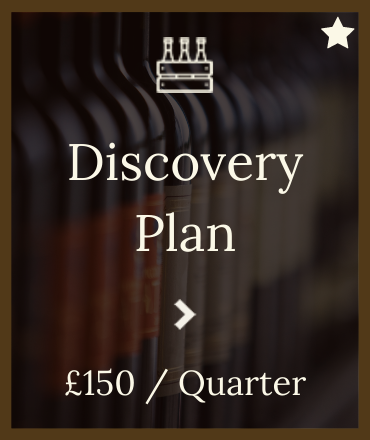Hourlier Wines Sparkling Wine and Food Pairing Guide

In this brief yet straightforward guide, we’ll explore sparkling wine and food pairings, giving you the tools to elevate any occasion with this fizzy wine style.
Sparkling wine stands out not only for its effervescence, but also for its complexity. It’s often more expensive than still wine because of the difficulty of production and the ideal conditions needed for its creation. Nevertheless, sparkling wine is one of the most food-compatible wine styles available, enhancing dining experiences in unique ways.
Not All Sparkling Wines Are the Same
Today, every wine-producing country offers some sparkling wine, yet not all are created equal. There are two high-end sparkling wine types: those made with the Italian method (also known as the Charmat method) and those made using the Traditional Method, the Méthode Champenoise.
The former, exemplified by Prosecco, is typically fruit-forward and crisp, produced affordably and priced accessibly. In contrast, wines like Champagne and French Crémant exhibit complex bouquets, also reminiscent of fruits but with hints of pastries, and other delights.
The secret behind the Traditional Method’s complexity lies in the time wine spends in bottle with the lees (the spent yeast that imparted effervescence). The finest Champagnes age for years, even decades, developing intriguing aromas.
Young sparkling wines or those fermented in stainless steel tanks with minimal contact with spent yeast often resemble stainless-steel-fermented white wines. In contrast, Champagne Method wines are yeasty, rich, and unmatched in depth.
Two Sparkling Wine Traits for Perfect Pairing: Delicacy and Acidity
Sparkling wine’s delicate nature and tartness make it versatile for pairing with a broad array of foods.
Pairing Sparkling Wine with Delicate Foods
Sparkling wine is never overpowering; its refined nature is as delicate as its fine bubbles and complements mild dishes that other wines might overwhelm. Raw fish, like sushi and sashimi, benefits from its company. Likewise, caviar, carpaccio, scallops, poached lobster, and raw oysters harmonise beautifully with sparkling wines. Fresh cheeses like Italian burrata and Brie shine alongside sparkling wine, as do mildly sweet desserts, like panna cotta or poached pears.
Sparkling wine is also an excellent choice on its own, making it a perfect apéritif or a companion for appetisers, small bites, and finger food.
Pairing Sparkling Wine with Oily Foods
High-end sparkling wine originates in cool climates, such as Champagne, one of Europe’s northernmost wine regions (second only to Britain’s vineyards, which also specialise in sparkling wines). Cooler climates yield tart grapes, which produce acidic wines. Sparkling wine is often the tartest of all wine styles, which is why producers add some sweetness before bottling—even Brut styles contain slight sweetness to balance their natural acidity.
Acidity is essential in food pairing. Wine’s tartness acts as a palate cleanser, encouraging you to take another sip. The more acidic the wine, the more food-compatible it is.
Still white wines, for example, especially from warmer regions, often lack tartness. When a dish is tarter than the wine, the wine can taste flabby and flat. Sparkling wine, however, pairs perfectly with tart dishes, like vinaigrette-dressed salads, tartare, citrusy seafood, and tomato-based plates.
Moreover, the acidity in sparkling wine cuts through fat, making it an ideal match for deep-fried foods. Few talk about the wonderful pairing of fish and chips with Champagne—but it’s a combination worth trying.
Pairing with the Occasion
Following the pairing strategies above, perhaps dry sparkling, such as Brut Champagne, and chocolate cake are not a match, as the cake is neither delicate nor acidic. Still, they are served together at weddings worldwide. For sparkling wine pairings, the “human element” is worth considering.
Sparkling wine, especially Champagne, is often seen as celebratory. Port might pair better with chocolate cake, but serving sparkling wine sets a festive tone. Whenever celebrating a milestone or sharing a significant moment, sparkling wine is the right choice.
Sparkling Wine Food Pairings FAQ
What are the best pairings for sparkling wine?
With its high acidity, sparkling wine complements almost anything, making it one of the most food-friendly wine styles. It pairs particularly well with delicate foods like caviar, sushi, and sashimi, but also enhances deep-fried foods and oily dishes with its refreshing acidity.
How should sparkling wine be served?
From crisp Prosecco to complex Champagne, sparkling wine is best enjoyed cold, between 4-10°C. Wines made with the Charmat method benefit from colder serving temperatures, while those crafted traditionally show best slightly warmer to reveal complex aromas. While flute glasses are classic, white wine glasses can enhance complex wines like aged Champagne, even if some effervescence is sacrificed.
Can sparkling wine be served throughout a meal?
Yes, sparkling wine can be served from appetisers to dessert. However, consider serving different sparkling wines with distinct methods and sweetness levels to enhance each course. Doing so will not only complement the food but also add a celebratory feel to the meal.
What is Crémant Wine?
Since only wine made in the Champagne region can be labelled Champagne, other French wine regions use the term Crémant for their sparkling wines made with the same Traditional Method. Crémants often rely on the same grapes and techniques as Champagne. However, they can vary, creating an extraordinary range of high-end sparkling wines. Since Crémant wines are not as famous as Champagne, they are often less expensive and a great deal.
Which sparkling wine should I choose?
For everyday enjoyment, most mid-range sparkling wines offer great quality. For special occasions, Champagne and Champagne-style wines, including Crémant from France’s renowned regions, are excellent choices. These wines are refreshing yet complex, delivering memorable aromas and flavours.
Explore Hourlier Wines Selection
If you’re looking to buy sparkling wine online, Hourlier Wine offers a range from Crémant d’Alsace to Crémant de Bordeaux, as well as exclusive Champagnes from small, private estates.
Wines to Try
Casters Liebart Rosé Champagne
This beautiful Rosé Champagne blends Chardonnay, Pinot Noir, and Pinot Meunier, highlighting the region’s red grapes. Dry on the palate, with hints of raspberry, cranberry, and sweet pastries, this wine is crafted by a fifth-generation family in the Marne Valley, with just a few thousand bottles produced each year. Ideal with shellfish and Mediterranean-inspired dishes such as fried calamari.
Joseph Cattin Brut Crémant d’Alsace
From Alsace, a classic French wine region, this Crémant is made with the traditional method using Pinot Blanc and Auxerrois. Aged up to 15 months on its lees, it offers complexity and a rich mouthfeel with notes of white stone fruit. Excellent with quiche, white pizza, and rich sauces.







